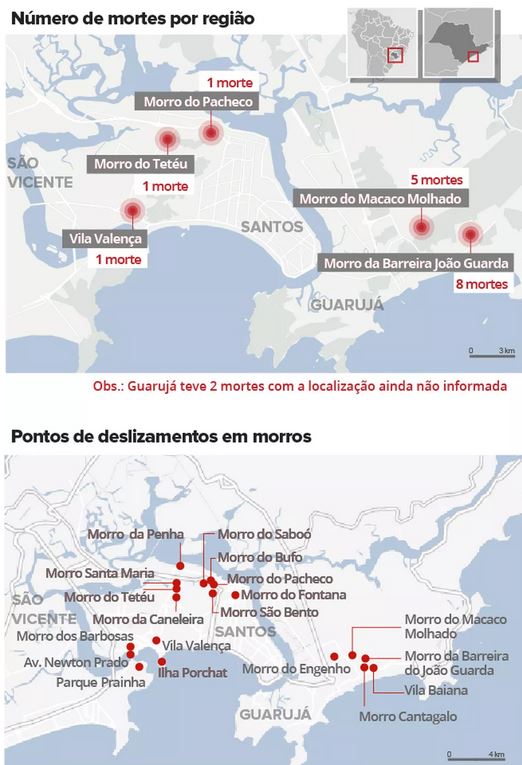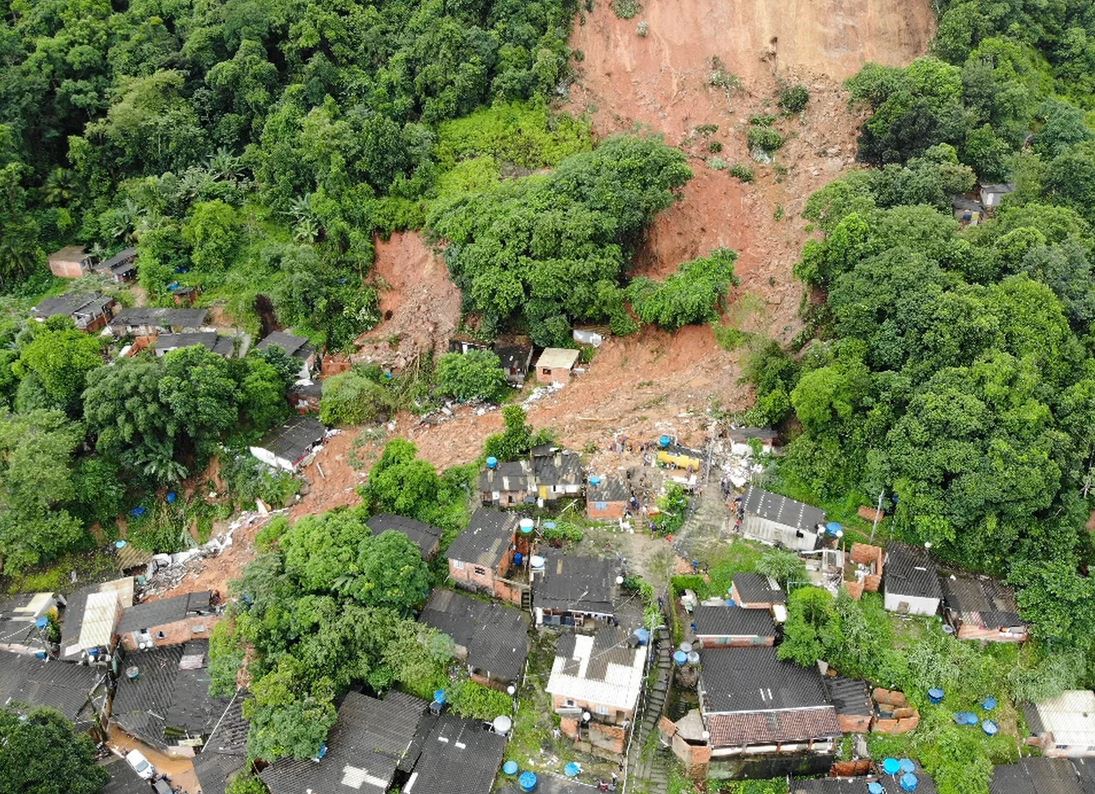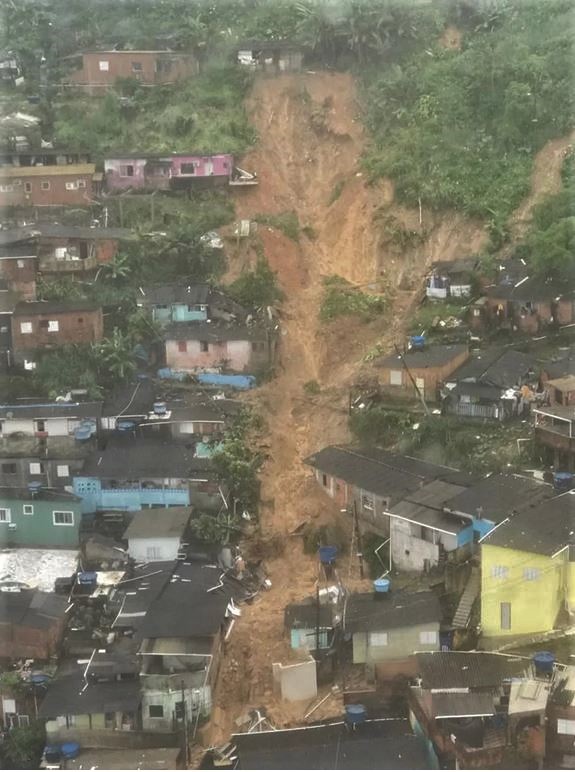4 March 2020
Baixada Santista: significant landslides in Brazil this week
Posted by Dave Petley
Baixada Santista: significant landslides in Brazil this week
Heavy rainfall on 2 and 3 March 2020 has triggered many landslides in the urban area of Baixada Santista in SE Brazil. Globo has a good report that provides details of the losses – it was detailing 18 fatalities at the time of publication, with a further 30 people reported missing. Rainfall totals in Guaruja are reported to have been in the region of 300 mm, with many other areas receiving over 100 mm. The same article has two maps showing the distribution of the recorded landslides and the losses to date:-

Maps showing the distribution of landslides in Baixada Santista. Maps published by Globo.
.
In one case, in Morro do Macaco Molhado (shown on the map above) a landslide buried a 25 year old woman and her son aged 10 months. Both were killed. Sadly, two members of the fire and rescue service were killed in a second landslide at the same location whilst trying to save the victims.
There are some images online showing the nature of the landslides in Baixada Santista. For example, this is a landslide in Guaraja:-

A landslide in Guaraja in Baixada Santista, published by Globo and collected by Carlos Nogueira/A Tribuna.
.
Meanwhile, Globo has published this image of a landslide at Morro do Guaraja, which has started as a shallow slip on the hillside (note the precarious houses built on platforms on the slope), and has then channelised through the urban area, probably following a roadway:-

A landslide in Morro de Guaraja in Baixada Santista, published by Globo.
.
Heavy rainfall in the south of Brazil frequently occurs in the early months of the year, triggering significant numbers of landslides. In January 2011 for example heavy rainfall in Rio de Janeiro killed 903 people, including 424 people in Nova Friburgo and 378 people in Teresópolis. The majority of the fatalities were the result of landslides and the resultant channelised debris flows.


 Dave Petley is the Vice-Chancellor of the University of Hull in the United Kingdom. His blog provides commentary and analysis of landslide events occurring worldwide, including the landslides themselves, latest research, and conferences and meetings.
Dave Petley is the Vice-Chancellor of the University of Hull in the United Kingdom. His blog provides commentary and analysis of landslide events occurring worldwide, including the landslides themselves, latest research, and conferences and meetings.